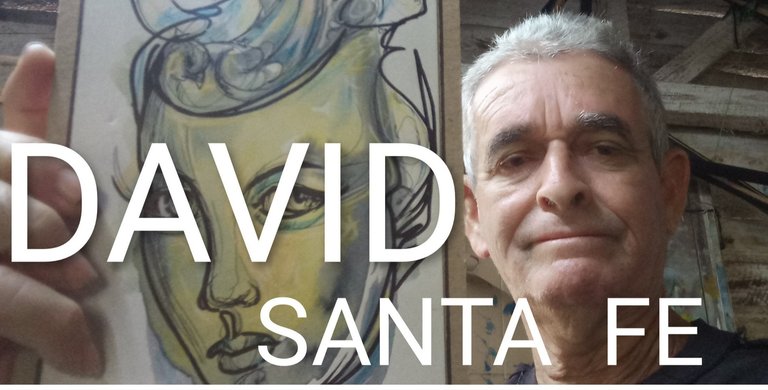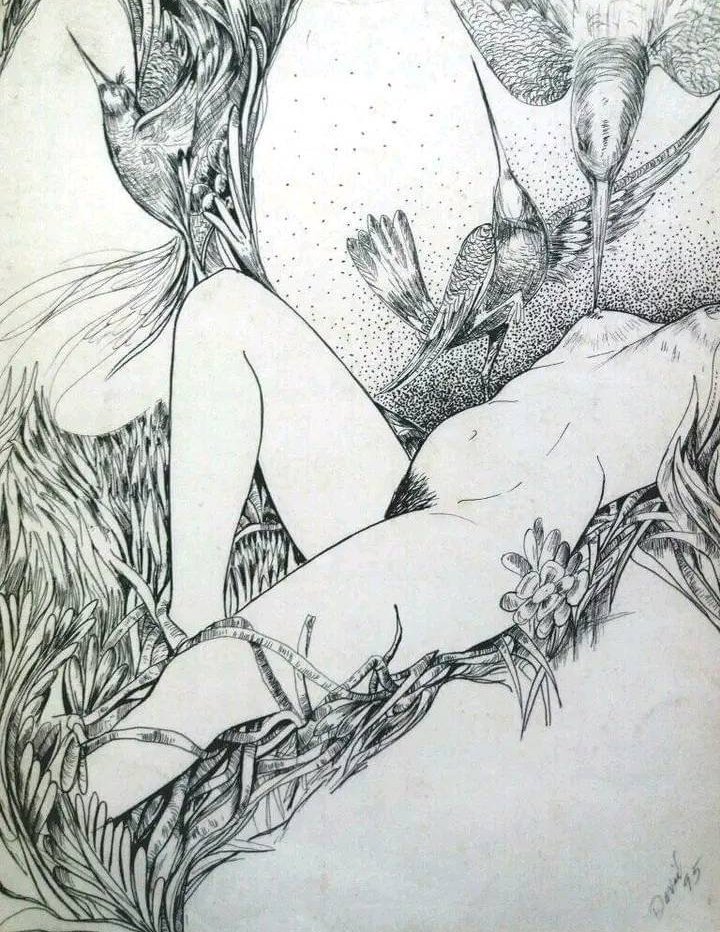
🖌️🖌️VERSION EN ESPSÑOL🖌️🖌️
Saludos a todos en esta comunidad
Llego a ustedes con el propósito de hacer mis aportes desde el punto de vista de compartir algunos conocimientos sobre dibujo, perspectiva y algunas otras cuestiones para iniciarse el género de dibujo.
Aclaro bien tempranito que estos tipos que les ofreceré van dirigidos específicamente a principiantes, e incluso a aquellos que nunca han tenido contacto con estas materias, pero que tienen interés en aproximarse para ensanchar el campo de sus conocimientos.
Comenzaré por las cosas más esenciales y básicas de la materia. Un poquito de teoría y lo demás mucha práctica.
Todo el que pretenda ser un dibujante de forma consciente debe conocer que son las líneas, tipos y funciones, además de sus significados para que corresponda con su uso práctico.
Para eso vamos a definir que las líneas más comunes son. La recta, la curva, la, la espiral y la ondulada, la quebdada, además de la mixta que la contiene a todas.
Gráfico #1

Y que por su posición en el plano son: Horizontal, vertical. O inclinadas.
Estos son conceptos muy elementales pero de importancia, que además incluye el significado de cada una de ellas.
El conocimiento de esto último permite utilizar la línea en correspondencia con el tema. Porque, por ejemplo, en una composición dónde, se asume el tema de la valentía, el arrojo, y la virilidad, el uso de la línea no puede ser el mismo que en una obra dónde se hable de reposo, tranquilidad, armonía, etc.
Gráfico #2
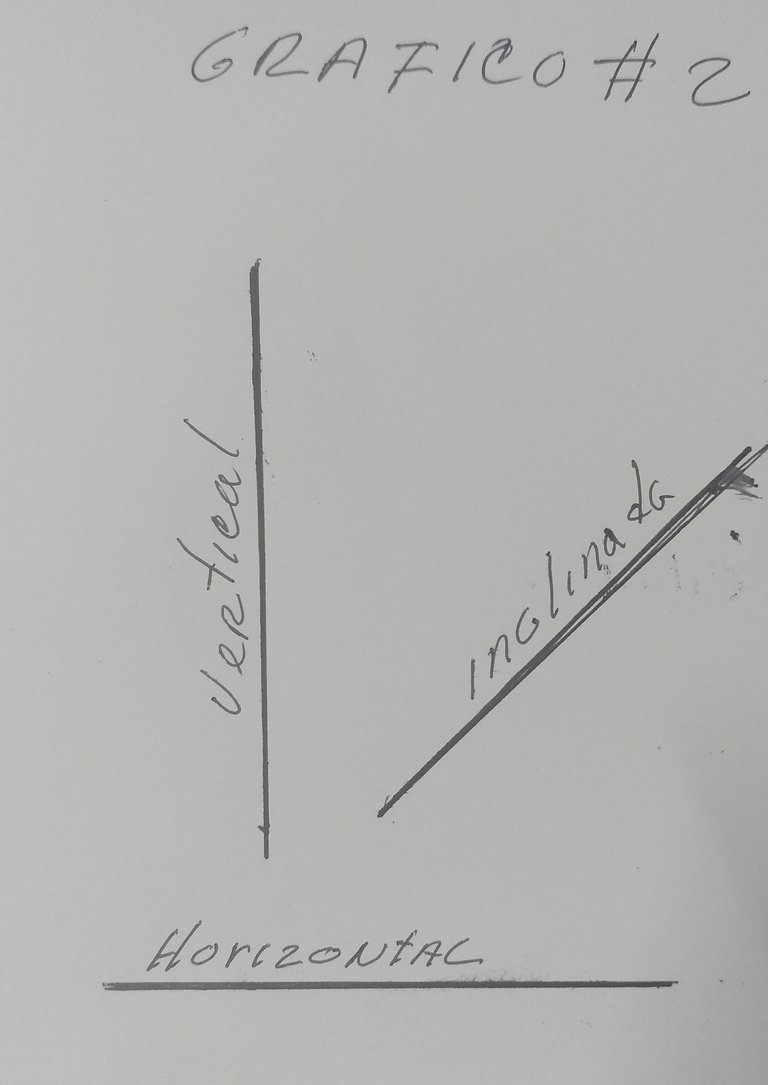
Para ir avanzando con nuestros principiantes a paso moderado, introducimos entonces que ya en el uso práctico de la construcción de las cosas, objetos o personas existen dos tipos de líneas fundamentales.
1_ líneas de contorno (aquellas que definen la forma)
_ Líneas estructurales (entramado interior, que dividen y subdividen las áreas hasta llegar a los detalles. Es la arquitectura interior de un dibujo
Gráfico #3.
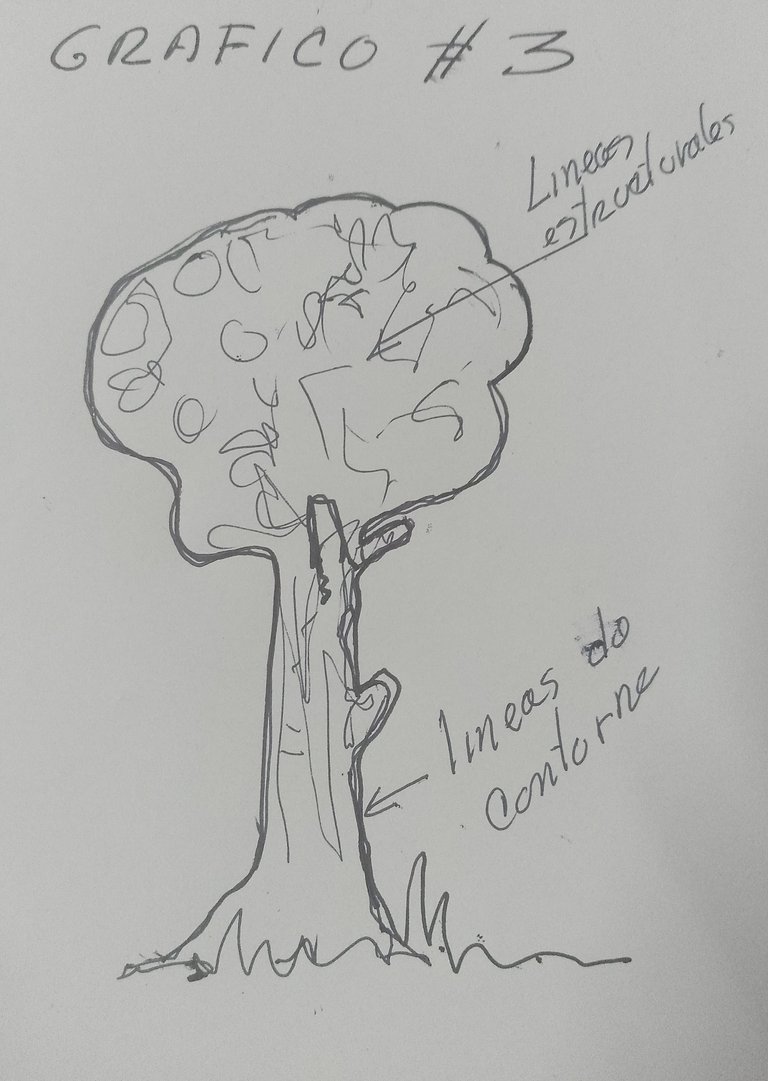
Los artistas deben hablar en lenguaje de artistas, y aquí hablaremos de líneas, áreas, planos. Estructuras etc. Porque sé que además de los elogios y comentarios puede que aparezcan algunas preguntas.
En el próximo post ya le estaremos dando en su práctico a este pequeñísimo manual con el que cualquiera que se lo proponga puede avanzar más rápido que el que no posea estas herramientas.
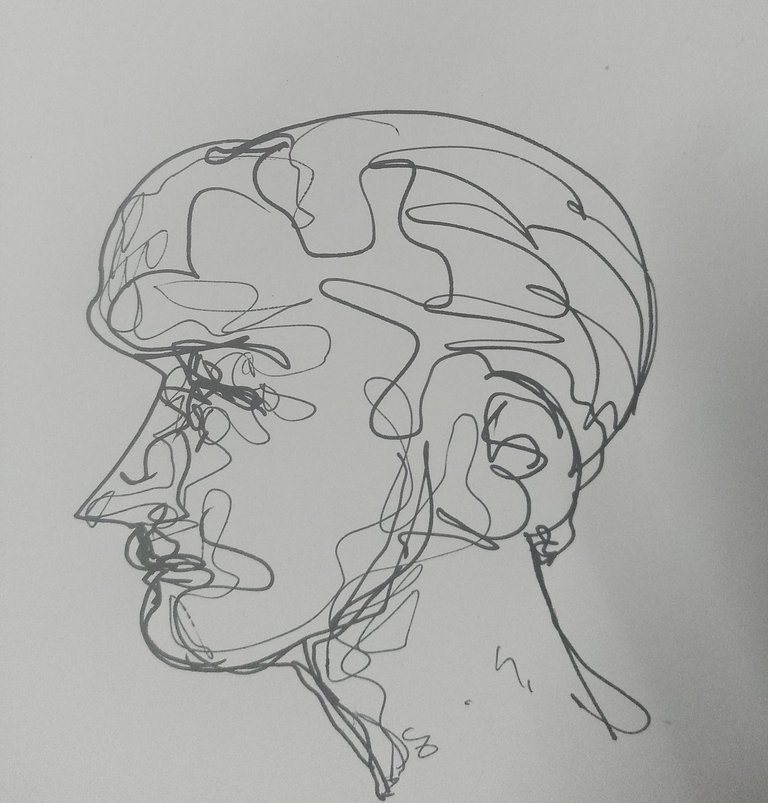
Vuelvo a reiterar que esto es para principiantes. Sé que la colmena está llena de artistas muy talentosos y con recorridos muy avanzados en estado materias y con ellos sería como bailar en casa del trompo. Cuestión que no pretendo Así que muchachos. Espéreme en el próximo post dónde los conduciré a dibujar objetos y cosas con un método muy sencillo, y les aseguro que será muy divertido.
🖌️ ENGLISH VERSION🖌️
Greetings to everyone in this community
I come to you with the purpose of making my contributions from the point of view of sharing some knowledge about drawing, perspective and some other issues to get started in the genre of drawing.
I clarify very early that these types that I will offer are specifically aimed at beginners, and even those who have never had contact with these subjects, but who are interested in approaching to widen the field of their knowledge.
I will start with the most essential and basic things of the subject. A little bit of theory and the rest a lot of practice.
Everyone who intends to be a draftsman consciously must know what are the lines, types and functions, as well as their meanings to correspond with their practical use.
For that we will define that the most common lines are. The straight, the curve, the spiral, the spiral and the wavy, besides the mixed line that contains all of them.
Graph #1

And that by their position in the plane are: Horizontal, vertical. Or inclined.
These are very elementary concepts but of importance, which also includes the meaning of each of them.
The knowledge of the latter allows to use the line in correspondence with the subject. Because, for example, in a composition where, the theme of bravery, boldness, and virility is assumed, the use of the line does not. It can be the same as in a work where the theme is rest, tranquility, harmony, etc.
Graphic #2
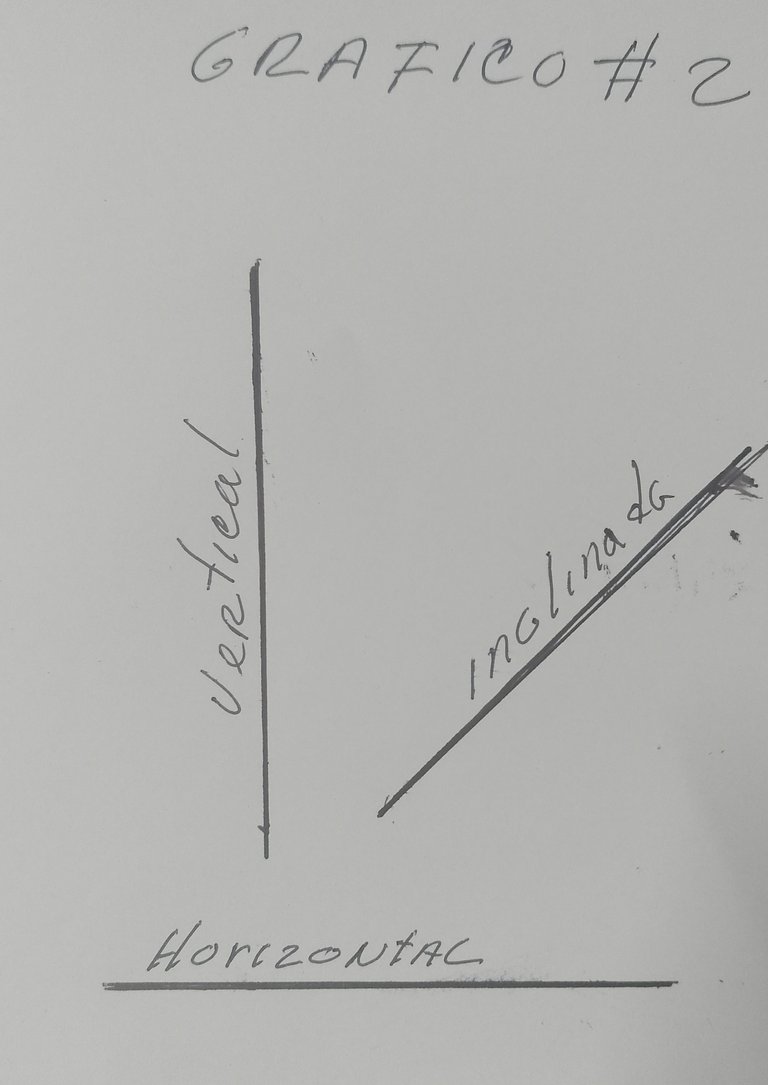
In order to advance with our beginners at a moderate pace, we introduce then that already in the practical use of the construction of things, objects or people there are two fundamental types of lines.
1_ contour lines (those that define the shape)
Structural lines (interior framework), which divide and subdivide the areas until reaching the details. It is the interior architecture of a drawing
Graph
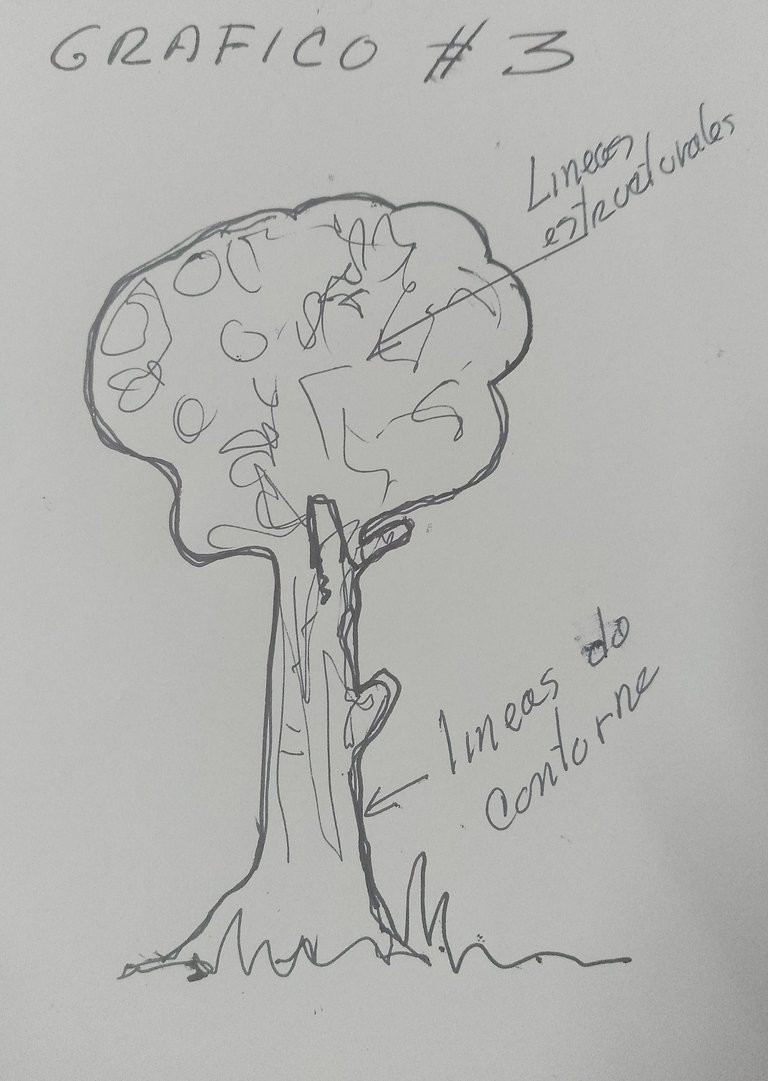
Artists must speak in artists' language, and here we will talk about lines, areas, planes. Structures etc. Because I know that in addition to the compliments and comments some questions may appear.
In the next post we will be giving you in its practical to this very small manual with which anyone who intends it can advance faster than those who do not have these tools.
I reiterate that this is for beginners. I know that the hive is full of very talented artists with very advanced backgrounds in these subjects and with them it would be like dancing in the house of the spinning top. So guys, wait for me in the next post. Wait for me in the next post where I will lead you to draw objects and things with a very simple method, and I assure you it will be a lot of fun.
Translated with DeepL.com (free version)
Photos taken with my Tecno Spark.
